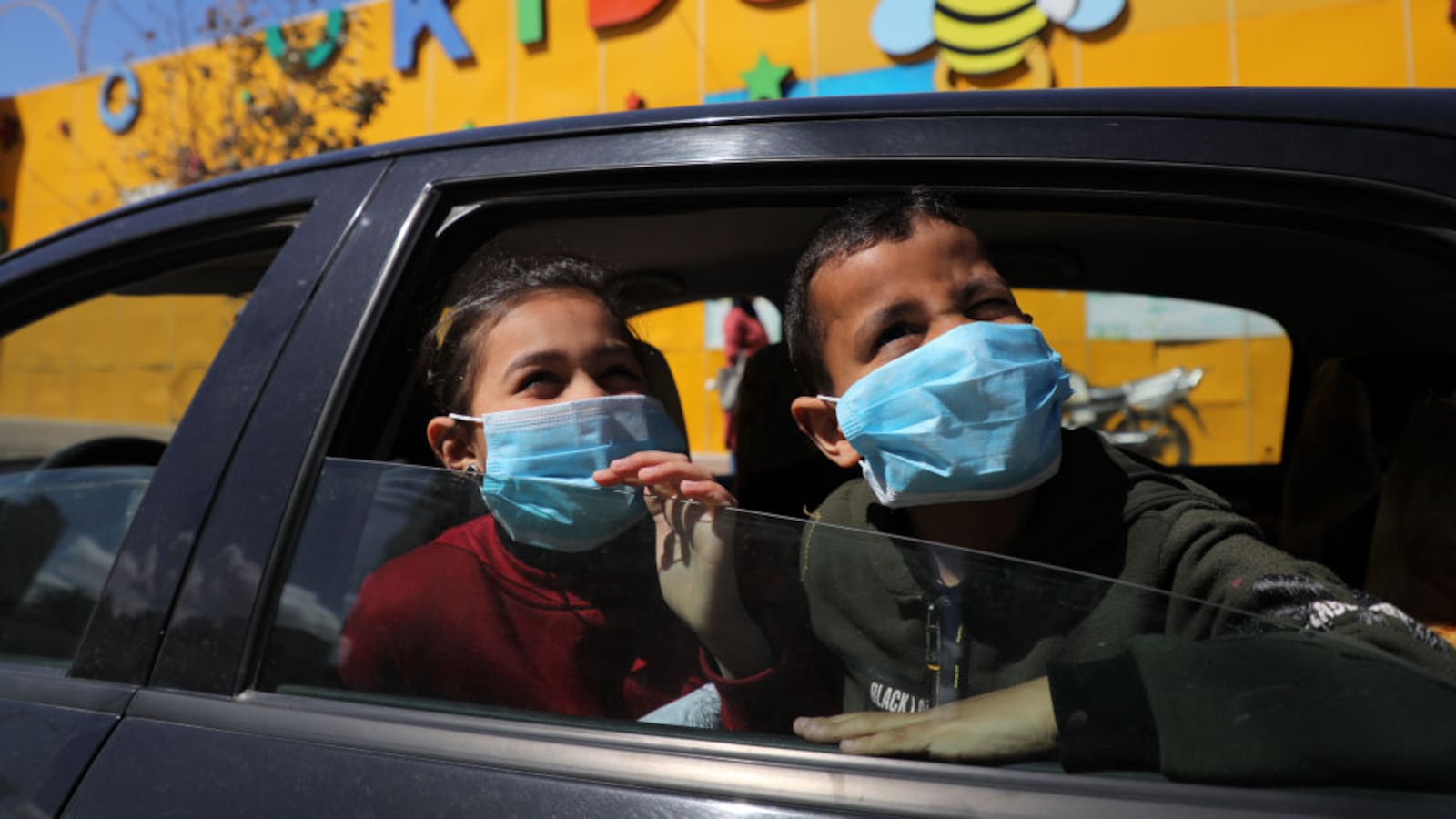After an aide at a Chicago high school with many medically fragile students tested positive for the new coronavirus last week, parents have wondered: Who, exactly, is vulnerable? What do we know about this virus and how it might affect our children and families?
The Centers for Disease Control and Prevention has been clear about the basics. The virus spreads between people in close contact and through coughs and sneezes. The best way to prevent illness is by washing hands often and avoiding those who are sick.
But many other questions don’t yet have clear answers. “COVID-19 is a new disease and we are still learning how it spreads, the severity of illness it causes, and to what extent it may spread in the United States,” the CDC says.
Epidemiologists are looking at the available data from China, where the outbreak began last year. So far, severe cases among children there have been rare. But there are open questions about what role children (and adults without symptoms) play in spreading the disease — critical information for schools and families deciding how to respond.
Here’s what health authorities are saying specifically about children and coronavirus.
Can children get the new coronavirus?
Yes. While children appear to make up a smaller percentage of the documented cases of COVID-19, children have tested positive for the virus that causes it.
The limited number of children who have been diagnosed with COVID-19 have generally had symptoms like a fever, runny nose, and cough, the CDC notes. Only in rare cases have they had gastrointestinal symptoms, like vomiting and diarrhea, or severe complications.
Are children less likely to be infected than adults?
It’s not yet entirely clear if children are less likely to be infected, or if their cases have simply been more likely to go undetected because they have milder symptoms. In late February, the World Health Organization said “it is not possible to determine the extent of infection among children” or “whether children are less susceptible.”
So far, adults have made up the vast majority of confirmed cases, and cases with more severe symptoms. When researchers recently looked at nearly 45,000 confirmed cases in China, fewer than 1% were in children ages 9 and under, while around 1.2% of cases were in children and teens ages 10 to 19, according to data published in late February in the Journal of the American Medical Association. (None of the children under 9 died, and only one of the older children died, the same data showed.)
But new data has epidemiologists thinking children could have similar rates of infection as adults, the Washington Post reported Tuesday. Research released last week examining data from a Chinese public health authority found child infection rates were comparable to adult infection rates if authorities tested people who had come into contact with others who tested positive, rather than just testing those with obvious symptoms.
Are children with certain medical conditions at a higher risk?
They could be, according to the CDC. Children with underlying health conditions could be at an increased risk of severe infection from the new coronavirus, just as they are more vulnerable to other respiratory illnesses.
Can children spread the new coronavirus?
“If they are infected, there is no reason to believe that they will not transmit,” Malik Peiris, a professor of medical science at Hong Kong University who specializes in coronaviruses, told STAT, a news organization focused on health and medicine.
But questions about how the virus affects children remain unanswered. Without better data and more testing, the World Health Organization said in late February, it’s not possible to know “what role children play in transmission.”
Can people spread it if they don’t show any symptoms?
The CDC says it appears people are most contagious when they show signs of being sick. There have been reports of people spreading the virus before showing symptoms, though “this is not thought to be the main way the virus spreads.”
What’s unclear is how often that kind of transmission is happening, especially from children to others.
When the World Health Organization looked at coronavirus response in China — interviewing government officials, scientists, public health workers, and others — no one could recall a child transmitting infection to an adult, though that is only one limited piece of evidence.
“I don’t think there’s any question that someone who is without symptoms and carrying the virus can transmit the virus to somebody else,” Dr. Anthony Fauci, director of the National Institute of Allergy and Infectious Diseases, said in the New York Times in February. “The question is, how prevalent is that phenomenon?”
What does all of that mean for teachers, parents, and families?
Hundreds of schools in the U.S. have made a decision to close, some for a day and some for longer, usually after a community member has tested positive for the new virus.
For now, CDC officials aren’t making blanket recommendations about school closures, leaving those decisions up to local communities.
Closing schools has helped contain the spread of epidemics in the past, but closures come with a host of tradeoffs, research has shown, often placing bigger burdens on low-income families, who may be less able to take off work to watch children at home and whose children often rely on schools for meals.
The CDC’s guidance doesn’t say that school staff are at particular risk. But it does say that students and staff should continue to take precautions, like washing their hands often, covering coughs and sneezes, and cleaning frequently touched surfaces. The agency also suggested increasing school ventilation, holding classes outdoors when possible, and postponing events where students from different classes or grades mix.
Sarah Darville contributed reporting.


